| 1. The Old House of the Jhuang |
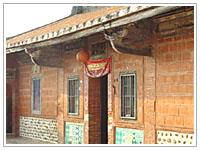 The entire building of the Old House of the Jhuang in Gupouliau can be divided into two eras: the Cing Dynasty and the Japanese Occupation. The parts that were built earlier are the front, the rear and the left and right wings in the rear, which are now 130 years old. The house is in the form of a courtyard dwelling that includes seven major rooms and three gate houses. The skillfully built traditional courtyard dwelling makes you feel as if you were back in the early Cing Dynasty and evokes your reminiscent sentiments. The entire building of the Old House of the Jhuang in Gupouliau can be divided into two eras: the Cing Dynasty and the Japanese Occupation. The parts that were built earlier are the front, the rear and the left and right wings in the rear, which are now 130 years old. The house is in the form of a courtyard dwelling that includes seven major rooms and three gate houses. The skillfully built traditional courtyard dwelling makes you feel as if you were back in the early Cing Dynasty and evokes your reminiscent sentiments. |
| 2. Jhuliao Water Intake Station |
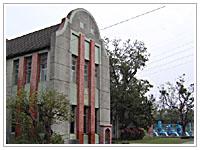 It is the oldest water intake station in the watershed in Kaohsiun and has a history of 80-90 years. The main structure imitates the Gothic architecture of the Renaissance. The station is now a valuable cultural asset ranked as a third grade historic spot. It is the oldest water intake station in the watershed in Kaohsiun and has a history of 80-90 years. The main structure imitates the Gothic architecture of the Renaissance. The station is now a valuable cultural asset ranked as a third grade historic spot. |
| 3. The Old Railway Bridge over the Lower Danshui River |
 The bridge was built during the Japanese Occupation (or during the Era of Meiji) and was completed in 1913 after 8 years of construction. Arc steel structures were used in the main body and the bases of the bridge piers were made of granite. The total length is 1,526 meters, which makes the bridge the longest one in Asia of the time. It is now ranked as a national historic spot. The bridge was built during the Japanese Occupation (or during the Era of Meiji) and was completed in 1913 after 8 years of construction. Arc steel structures were used in the main body and the bases of the bridge piers were made of granite. The total length is 1,526 meters, which makes the bridge the longest one in Asia of the time. It is now ranked as a national historic spot. |
| 4. The Gate of the Caogong Irrigation Canal |
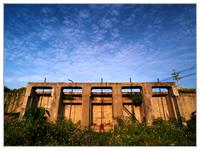 The Caogong Irrigation Canal System was built under the lead of Jin Cao, governor of Fongshan County in the 17th year of Daokuang (1837). It took two years to complete five water gates, collectively nicknamed “Five Hole Jaws”. Later, a new irrigation canal was built, named “the new Caogong Irrigation Canal”, which turned Fongshan a land of wealth of the time. The Caogong Irrigation Canal System was built under the lead of Jin Cao, governor of Fongshan County in the 17th year of Daokuang (1837). It took two years to complete five water gates, collectively nicknamed “Five Hole Jaws”. Later, a new irrigation canal was built, named “the new Caogong Irrigation Canal”, which turned Fongshan a land of wealth of the time. |
| 5. The Old House in Dapingding |
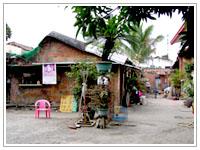 The house is located by the water on the elevated Dapingding, Dashu and owned by Mr. Encing Huang. It is the oldest building in the town (a courtyard dwelling with three halls and two enclosed courtyards) and has a history of 250 years. Since the house has not been repaired for years and the family has moved out, the collapsed stone walls and the sinking roof add a feeling of decay to the house. The house is located by the water on the elevated Dapingding, Dashu and owned by Mr. Encing Huang. It is the oldest building in the town (a courtyard dwelling with three halls and two enclosed courtyards) and has a history of 250 years. Since the house has not been repaired for years and the family has moved out, the collapsed stone walls and the sinking roof add a feeling of decay to the house. |
| 6. Siaopingding Watershed |
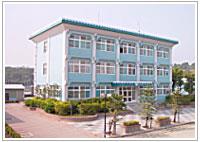 The Siaopingding watershed was born at the same as the Jhuzihliau watershed. It was initially built to receive the water pumped up in Jhuzihliau and is now receiving water from the river dike. At elevation of over 200 meters, one can see the Gaoping Bridge afar from here. The Siaopingding watershed was born at the same as the Jhuzihliau watershed. It was initially built to receive the water pumped up in Jhuzihliau and is now receiving water from the river dike. At elevation of over 200 meters, one can see the Gaoping Bridge afar from here. |
| 7. The Monument of Toyoji Ida |
| ㄒToyoji Iida was born in Shizuoka Prefecture, Japan. He was responsible for building the Pingtung line of the railway during the Meiji Era. During the construction of the bridge over the Lower Danshui River, he died at Tainan Hospital at the age of 40 because he fell sick from persistent overwork. His colleague Kosaburo collected all his written works and buried them under the monument. |
| 8. The Well of Dragon’s Eye |
 There is a nationally renowned well in Dashu, Kaohsiung County – the Well of Dragon’s Eye that tells a popular legend. In the early days, there was a strange agreement among the villagers: “one can wash his or her feet but not one’s hands in the well”. Although the well gradually became deserted, the villagers still keep this promise today. There is a nationally renowned well in Dashu, Kaohsiung County – the Well of Dragon’s Eye that tells a popular legend. In the early days, there was a strange agreement among the villagers: “one can wash his or her feet but not one’s hands in the well”. Although the well gradually became deserted, the villagers still keep this promise today. |
| 9.Jioucyutang Taifang Company Pineapple Cannery |
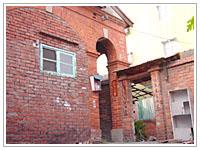 Pineapple reached its prime in the 12th year of Showa (1937). At the time, Taiwan Godo Co., Ltd. owned 12 pineapple processing plants (most of them gathered in Jioucyutang today). Juicyutang was truly the hub of pineapple production at the time. Pineapple reached its prime in the 12th year of Showa (1937). At the time, Taiwan Godo Co., Ltd. owned 12 pineapple processing plants (most of them gathered in Jioucyutang today). Juicyutang was truly the hub of pineapple production at the time. |
|